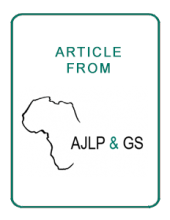Land Library
Welcome to the Land Portal Library. Explore our vast collection of open-access resources (over 74,000) including reports, journal articles, research papers, peer-reviewed publications, legal documents, videos and much more.
/ library resources
Showing items 118 through 126 of 129.Kenya’s development context is greatly influenced by land use and ownership. Consequently land holds immense cultural, spiritual and socio-political significance for nearly all communities. However, proper utilization of land has been besmirched by numerous challenges.
To address food insecurity, the Government of Ethiopia embarked on a rapid transformation in the agriculture sector to increase production, productivity, market access and create employment opportunities by promoting large scale agricultural investment projects.
The Continental Land Policy Initiative, now the African Land Policy Centre, has made tremendous progress in generating knowledge on land governance since inception in 2006.
Most of the cities and urban centres of developing nations, Tanzania inclusive are faced with increased urbanization coupled with informal land development in non-designated areas including marginal and hazardous lands.
Forced evictions violate a number of internationally and nationally recognized human rights. However, it directly translates to a denial of the right to adequate housing which forms the very foundational basis for the realization of other rights.
According to a 2008 World Bank Report, Uganda is among the countries with the youngest population and the highest youth unemployment rate of 83%.
Rwanda has implemented a land tenure regularization program since 2008 that enabled the adjudication and registration of land rights for both men and women. However, Rwandan women are vulnerable to land conflicts because some men do not recognize or respect women’s rights in land.
With the fast world population growing, the efficient use of land properties became of great necessity. In this context, the traditional two-dimensional (2D) cadastral management mode cannot satisfy the need of current 3D land use and 3D urban planning (Guo et al. 2014).
In Northern Africa region, land administration and land management systems are characterized by the existence of various institutions and a diversity of land tenures.

